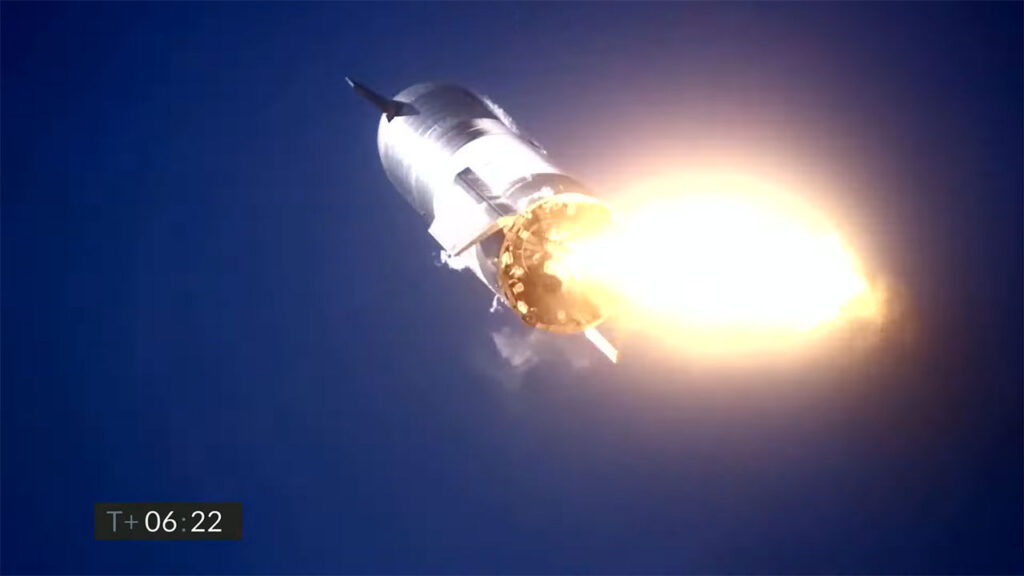SpaceX Starship prototype successfully completed its 10 km high-altitude test flight yesterday but like its predecessor SN8, it wasn’t able to land safely. The highly anticipated event was live-streamed by SpaceX and enthusiasts like Everyday Astronaut and Boca Chica Gal.
Starship SN9 reached its aimed height of 10 km (33,000 ft) at T+ 4:00 mins with only the first Raptor engine firing to hold the altitude. The 3rd and 2nd engines were shut down at T+ 2:00 mins and T+ 3 mins 20 seconds.
After shutting off all three Raptor engines, the SN9 prototype performed a belly flop at T+ 4 mins 30 seconds. Now the free fall starts, in the start the nose was down a bit but it was fixed after a few seconds to achieve a perfectly horizontal position.

At T+ 5 mins 30 seconds, the Starship SN9 continued the subsonic descent. The spaceship uses two forward and two aft flaps to control its altitude during the descent and prepare for a smooth landing (source: SpaceX website).
At T+ 6 mins 10 seconds and 1.5 km distance from the landing pad, two engines were ignited successfully to position the SN9 back to the verticle stance. SN9 transitioned to only one engine for the landing burn.
Despite all the successful events in this exciting test flight, the landing was met with a blast and the Starship SN10 prototype was looking from a not so safe distance.

we need to fail. We need to fail down here so we don’t fail up there.
Movie: First Man (Neil Armstrong portrayed by Ryan Gosling)
SpaceX started preparing for SN9 high-altitude test flight in the first week of January by clearing the SN8 debris from the Boca Chica, Texas landing area. CEO Elon Musk and his engineering team at SpaceX had inspected the remains of the SN8 prototype to better understand the reasons behind the crash landing.
The SN9 test flight was actually due last month but two Raptor engines needed to be swapped as a result of three successful static fire tests in a single day. Although SpaceX swapped the engines quicker than before but it still took a couple of weeks to reach yesterday’s test flight and landing.
Elon Musk‘s Mars colonization plan aims to send 1,000 Starships to the red planet, losing a few early prototypes in the meantime does not hurt. The art of landing the Starship needs to be perfected here so the chances of exploding the real spaceship are minimal on Mars.
Hopefully, the SN10 landing will be a successful one and we will witness the history in the making once again.
Stay tuned for future updates on Starship and SpaceX, follow us on:
Google News | Flipboard | RSS (Feedly).


